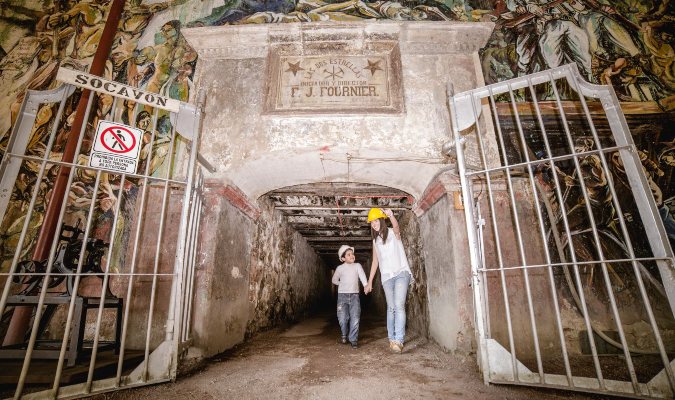Tlalpujahua sits a long way from Santa Claus’ North Pole residence – around 5,000 miles as the sleigh flies. But in this small Michoacán town in the middle of Mexico, it’s Christmas every day of the year.
Once a gold and silver mining village, the residents of Tlalpujahua are now almost solely dedicated to the production of ornate glass baubles manufactured using traditional glass blown techniques.
Estimates put production of these ubiquitous Christmas decorations at around 70% of the local economy, while tourists come from across the world to see the local artisans at work and to buy a souvenir or two.
However, the town’s dedication to creating Christmas baubles is a relatively recent phenomenon. Until around 80 years ago, Tlalpujahua was better known for its gold and silver mines.

Dos Estrellas Mine, now a museum
For centuries, the indigenous people and later the Spanish conquerors had been extracting minerals from the lands.
But at the beginning of the 20th century, a French engineer by the name of Francisco J. Fournier (quite literally) struck gold by opening Dos Estrallas Mine. From 1908 to the end of the 30s his mine was among the world’s most productive.
In 1937, however, disaster struck in the form of a major landslide. One-third of the town was buried, 300 people died, and the Dos Estrellas Mine was destroyed. The golden age of mining was over.
By the end of the Fifties, the extraction of gold and silver had collapsed entirely in Tlalpujahua and the town required a new income source.
Although they didn’t know it, their economy boost was sitting more than 2,000 miles away in Chicago in the form of Tlalpujahua native, Joaquin Muñoz Orta.
Muñoz Orta had immigrated with his wife to the United States, creating Christmas decorations and ornaments for a local business and unwittingly gathering skills that would one day save Tlalpujahua. In the mid-60s he decided to return to Mexico, setting up a Christmas decoration workshop.
At its height, his company employed around 1,000 people and was the largest Christmas decoration workshop in Latin America. His success then inspired others to create their own bauble businesses.
Unfortunately, his company is no more, but around 250 local families are keeping his traditions and skills alive, creating tens of millions of baubles each year.

A shopper in one of Tlalpujahua’s Christmas stores
Today’s artisans use a traditional blown glass technique to produces their wares. First, they light a gas torch before bringing the roaring flame to one end of a glass tube. Then, they blow through the other end of the tube to create an orb shape.
Once set, the spheres are painted with intricate metallic designs before a cap is added to the top.
While the traditional sphere shape continues to be the most popular, the Tlalpujahua artisans have flexed their creative skills and now create everything from simple star designs to intricate monkey and avocado shapes.
Unsurprisingly, a year-round Christmas workshop in the mountains of Mexico is an intriguing prospect for curious travelers. Tourists from across the globe now come to this small Pueblo Magico to pick up a Christmas decoration and to see the artisans at work.
Tlalpujahua also holds an annual celebration from around the start of October to the middle of December known as the Fair of the Sphere (Feria de la Esfera). Here, the town’s artisans display their finest products in the Municipal Auditorium.
In-the-know travelers combine their Tlalpujahua experience with a visit to the other artisanal towns in the same area. Journey Mexico, for example, has a magical eight-day Winter Holiday in Colonial Mexico trip that combines a visit to Tlalpujahua with tours of Tzintzuntzan, Patzcuaro, San Miguel de Allende, and Mexico City.
Contact a Journey Mexico Travel Planner or fill out our Trip Planner to secure a dream Holiday Season in Mexico.






